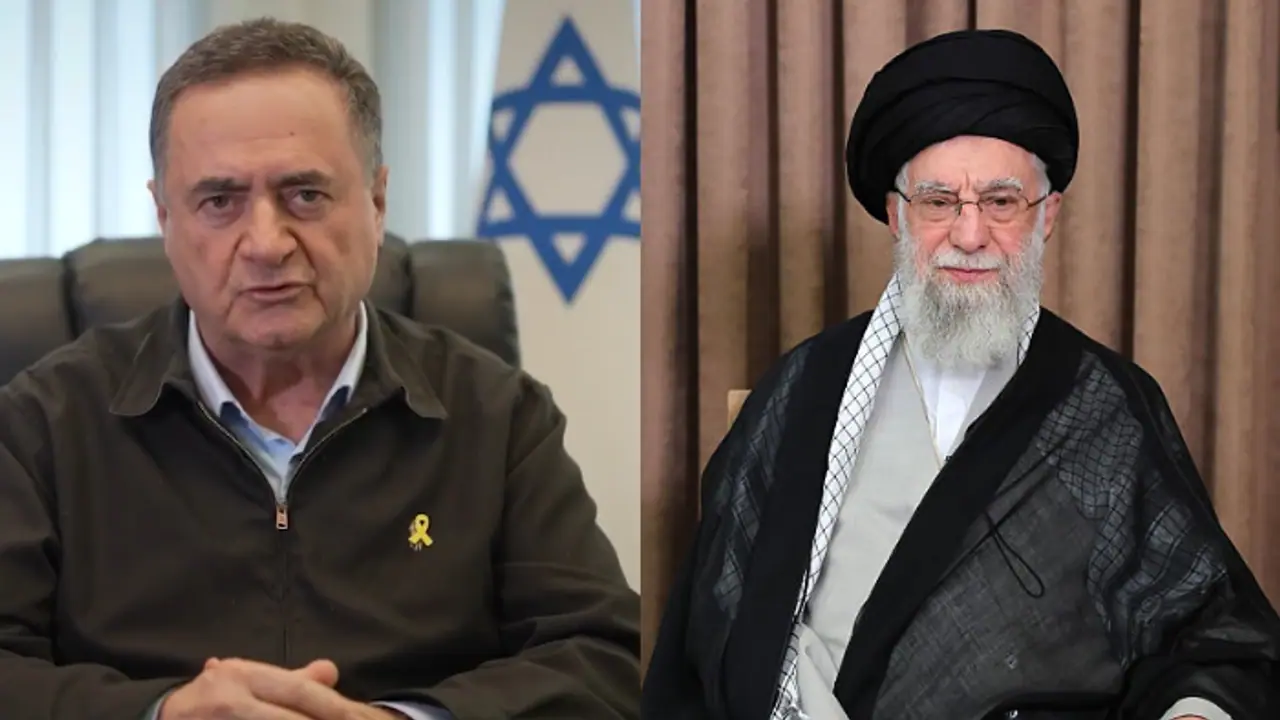Israeli Defence Minister Israel Katz confirmed Iran’s Supreme Leader Khamenei was a target during the recent conflict. Katz said Khamenei evaded a strike by going underground and asserted Israel needed no US consent for such action.
Jerusalem: Israeli Defence Minister Israel Katz confirmed on Thursday that Iran’s Supreme Leader Ayatollah Ali Khamenei was a target for assassination during the recent 12-day war between Israel and Iran but avoided elimination by going into deep hiding.

“If Khamenei had been in our sights, we would have taken him out,” Katz said in an interview with Kan public television. He added that Khamenei “went very deep underground and broke off contacts with commanders”, making a strike unrealistic.
Speaking in multiple televised interviews, Katz said that Israel had actively searched for Khamenei throughout the conflict. “We searched a lot,” he told Channel 13, stressing that Israel’s aim was not regime change but to destabilise Iran’s leadership and exert pressure during the war.
Israel killed Iranian commanders and scientists in airstrikes
The conflict, which lasted from June 13 to June 25, ended with a US-brokered ceasefire. During the fighting, Israel launched a series of airstrikes targeting Iranian commanders and nuclear scientists, aiming to weaken Iran’s command structure and delay its nuclear ambitions.
Katz said Israel maintained aerial superiority and followed a strategy of “enforcement actions against Iran”. These operations, he said, were designed to prevent Iran from restoring its nuclear and missile capabilities.
Israel says it didn’t seek US permission to target Khamenei
When asked whether Israel coordinated with Washington regarding a potential strike on Khamenei, Katz was clear: “We don’t need permission for these things.”
He even compared Khamenei to Hezbollah leader Hassan Nasrallah, who was assassinated last year. “I wouldn’t recommend that he stay tranquil,” Katz warned, saying, “He should learn from the late Nasrallah... I recommend that he do the same thing.”
Trump had also threatened Khamenei during the conflict
During the war, US President Donald Trump also made threatening remarks about Khamenei. On June 17, Trump posted on social media:
“We know exactly where the so-called ‘Supreme Leader’ is hiding... We are not going to take him out (kill him!), at least not for now.”
However, Trump later walked back that statement, saying that regime change in Iran was not advisable.
US strikes on Iran’s nuclear sites were part of Operation Midnight Hammer
Despite backing away from the threat, Trump ordered Operation Midnight Hammer, a series of precision strikes on three Iranian nuclear sites using B-2 bombers and submarine-launched Tomahawk missiles.
White House Press Secretary Karoline Leavitt described the operation as a “total obliteration” of Iran’s nuclear infrastructure.
“It was a total success... Not only does our own intelligence say that, but even the Iranian foreign minister and the United Nations agreed,” she stated at a briefing.
Leavitt also reiterated that the US remains committed to diplomacy, with indirect talks between Washington and Tehran expected next week. The US is reportedly working through intermediaries like Qatar to explore pathways for Iran to adopt a “non-enrichment civil nuclear program.”
Israel to halt pursuit of Khamenei post-ceasefire, but issues warning
Following the ceasefire, Katz confirmed that Israel will not actively pursue Khamenei’s life anymore, but warned that any future aggression would trigger retaliation.
“There’s a difference, before the ceasefire, after the ceasefire,” he said.
Katz admitted that while Israel had destroyed Iran’s nuclear enrichment infrastructure, the location of all enriched uranium remains unknown.
Still, he claimed the strikes had delayed Iran’s nuclear ambitions by many years, vowing: “We won’t let that happen.”


